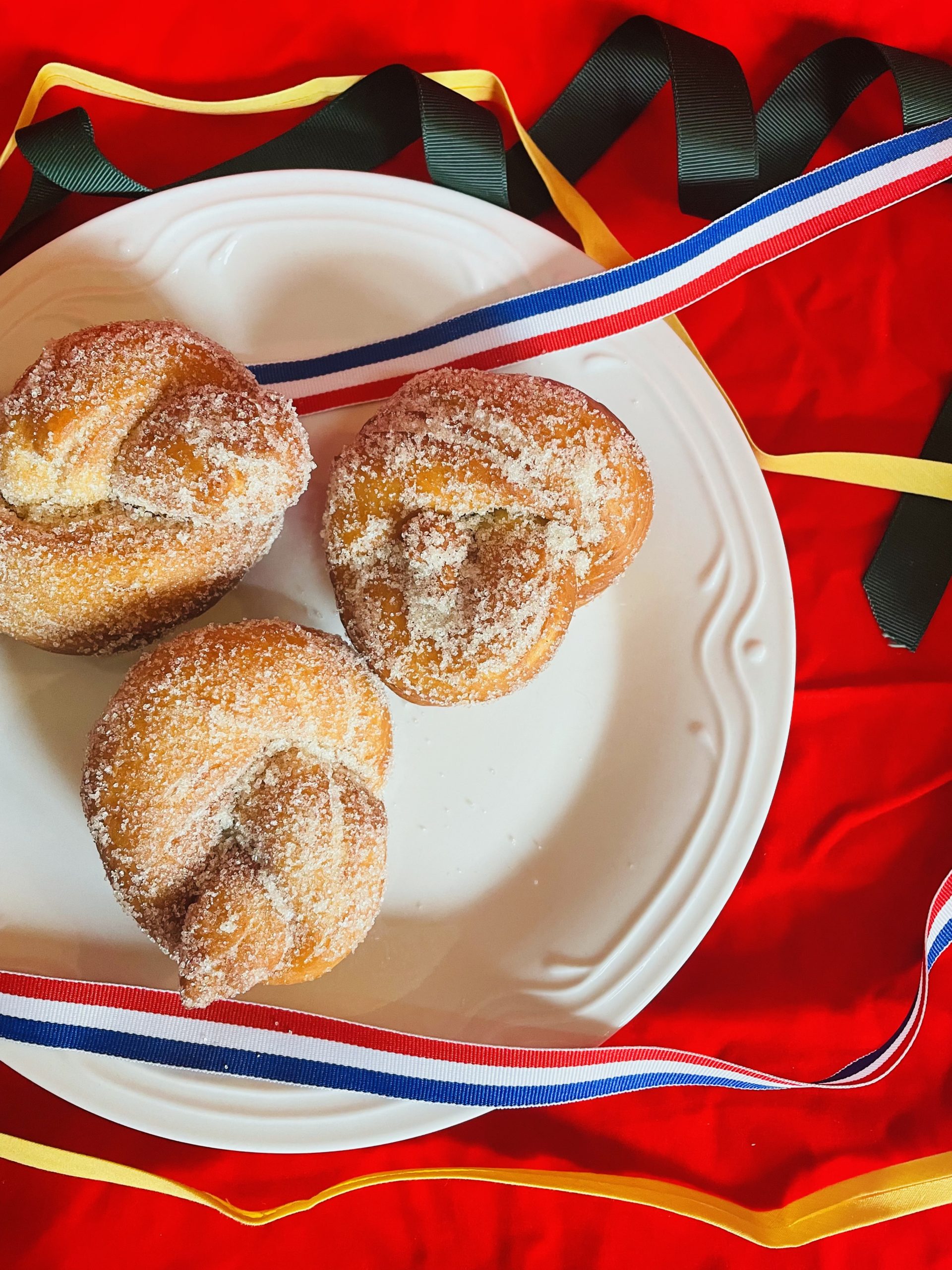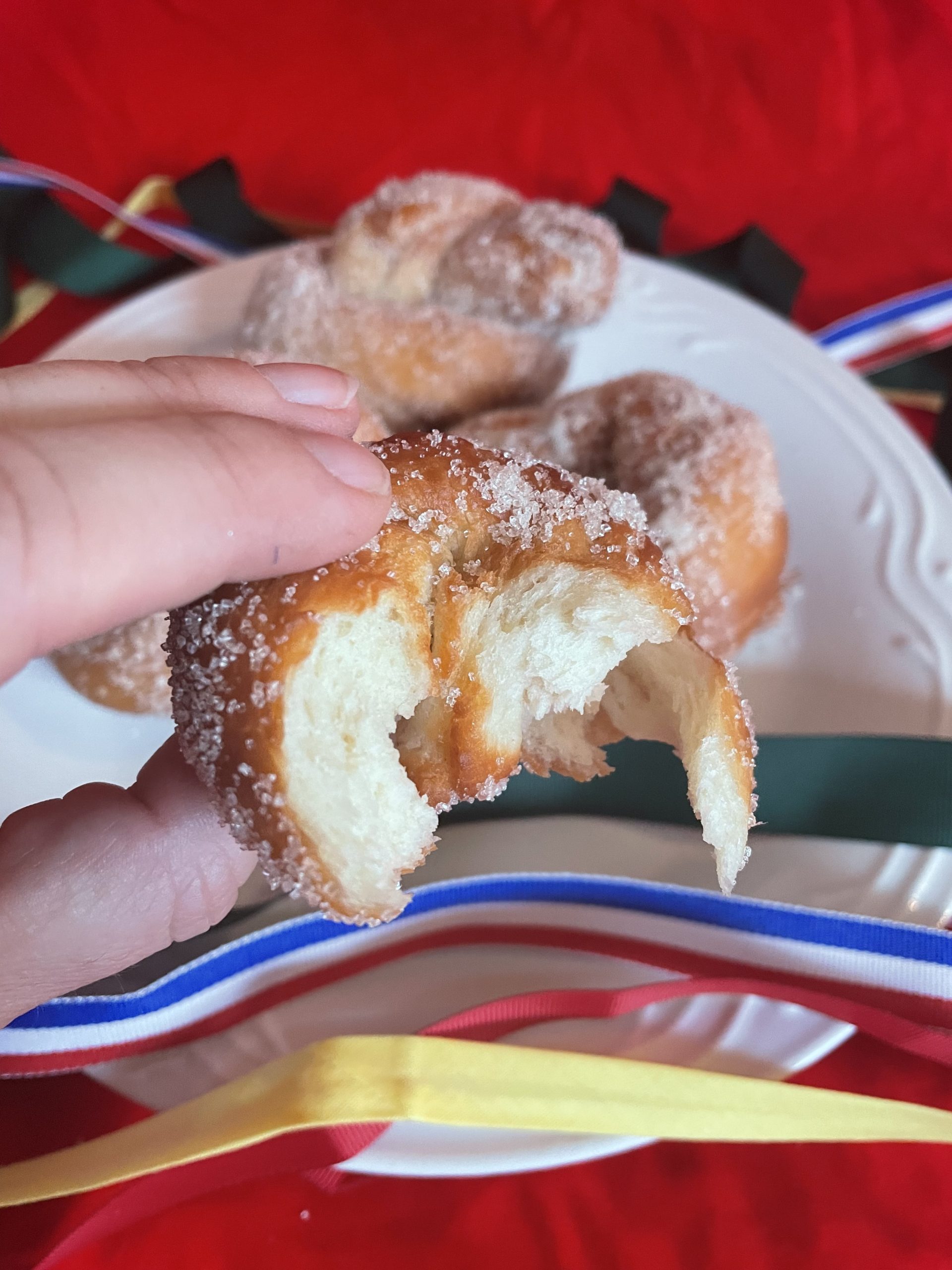It is the end of February. In Limburg, the south of the Netherlands, we celebrate Carnaval. Some people know it as “Carnival” in Brazil or “Mardi Gras” in New Orleans. During these festivities, in the Netherlands we eat some specific foods. On Ash Wednesday there are several ways we eat herring (raw or in a salad). During those days we also need some baked sweet goodness: ”Nonnevotten”!
What is a Nonnevot!
Doesn’t this word sound funny? I think you would even laugh harder when I told you what it means. Literally is means: Nun Butt….yes, the butt of a nun! The first thought might be:” Does a nun’s behind look like this?”

I actually didn’t make it the right way. The traditional ”Nonnevot” looks like this:

As you can see, it is a kind of donut, but in a different shape. The pastry is deep fried and there is a good amount of sugar on top and all around.
Where does the ”Nonnevot” come from and how did it get this name?
There are different theories about the name. My theory is that Carnaval is a religious celebration in the south of the Netherlands (and many more European cities) and during this time people are partying, dancing, singing, drinking and making jokes (“Buutteredner” are like the stand-up comedians). Maybe they made jokes about the priests and nuns….and about their…well….behinds!
I found more theories. The ”Nonnevot” dates back to 1676 when these were offered to the French revolutionists who wanted to take over the city of Sittard in the south of the Netherlands. In this city the Franciscan nuns were collecting old clothes for the poor and gave these ”Nonnevotten” to the poor also. In some cities in the south of the Netherlands they said that these pastries looked like the bow on the back of the nuns dresses. An other explanation could be that these were coming from Germany, where they were called ”Nunnifutte”.

It’s not that easy to trace back where these pastries come from…..but hey…they taste good!
Did you know that the doughnuts comes from the Netherlands?
The Dutch settlers brought the “Oliekoecken” over from the Netherlands to the USA in the early 18th century. Literally they’re called “Oil-cakes”. It is dough deep fried in oil.
In the Netherlands there are ”Oliebollen”, which are eaten around New Years Day and de “Nonnevotten”, which are usually eaten around Carnaval. The “Oliebollen” are round and the “Nonnevotten” are shaped like a knot. Doughnuts are more like a flattened ball with a hole in it.
The shape of the doughnut in the USA was different in the early 19th century. There are several theories how the doughnut got its shape. One of the theories was about a 16-year old boy, who thought the center of the doughnut was too greasy and almost never fully cooked through. He made a hole in the center of the doughnut. His mother later on used spices like cinnamon and lemon rind and used nuts to add to the middle and called them: doughnuts.
The name doughnut became “donut” later on and was also used among a lot of recipes for doughnuts/donuts.
Source: Velvetcreamedoughnuts.
Here is the recipe (adapted from OhMyDish)
Nonnevot (A Dutch Donut)
During Carnaval in the south of the Netherlands one of the traditional foods is this deep fried donut-like pastry.
Ingredients
- 1 Cup Luke warm milk
- 3 Cups All purpose flour
- 2 Packages Yeast
- ¼ Cup butter, room temperature
- 4 Tbsp sugar
- ¼ Tsp salt
- 1 egg
- 1 Bottle oil for frying
- sugar for dusting
Instructions
-
When the milk is lukewarm, dissolve the yeast and and a little bit of the sugar and set aside for about 5 minutes.
-
Mix the flour, the rest of the sugar and the egg in the Kitchen Aid mixer with dough hook.
-
Slowly add the yeast mixture and knead the dough until it comes together, scraping the edges.
-
Cut the butter in small pieces and add the pieces with the salt into the dough. Keep kneading the dough for about 5 more minutes.
-
Cover the dough with a clean towel and set in a warm, non draft place for 45-60 minutes.
-
Punch the dough and let rest for another 15 minutes.
-
Cut the dough in 10 equal pieces and roll out each piece in a 12 inch string. You can either make a knot of each piece (like I did) or loop the string, like the original “nonnevot”.
-
Turn the deep fryer on, or heat up the oil in wok or frying pan on the stove. The temperature should be about 350F.
-
The “Nonnevotten” need to rest for about 10 more minutes while the I’ll is heating up.
-
Put a good amount of sugar in a shallow dish.
-
With a slotted spoon fry the “Nonnevotten” (maybe 3 or 4 at a time) in the oil until they turn nicely golden brown. Take them out of the oil with a slotted spoon and immediately put them in the dish with sugar. Sprinkle the “Nonnevotten” with sugar all over.



Hello everyone,
Welcome to my Crafty Dutch Girl blog! Grab a cup of “koffie” and browse through fun blog posts about our Dutch family expat life in the USA, Dutch history, Dutch recipes, Dutch things to do in the USA and all kinds of crafts and activities. Don’t forget to connect with me for new ideas! “Groetjes en tot ziens”.


